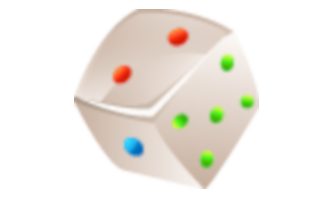Earth's oceans
Science, Grade 5
Earth's oceans
Study Guide

Earth's oceans
Flash Cards

Earth's oceans
Quiz

Earth's oceans
Worksheets

Earth's oceans
Games

Study Guide Earth's oceans Science, Grade 5
❮
1
/
4
❯
EARTH’S OCEANS Oceans as a Natural Resource Oceans are a natural resource for the salt (that you eat on your fries) and the fish and other sea animals we eat (like tuna fish sandwiches). Ocean Currents Oceans are ALWAYS moving because of currents and tides. Currents on the surface of the ocean are caused by wind. Currents move large amounts of water great distances. Ocean Tides Tides are the periodic rising and lowering of the ocean levels. Tides are created because the Earth and the Moon are attracted to each other. The Moon pulls the water on Earth towards it, causing the tides. The Moon travels around the earth, the Earth and Moon travel around the sun, and their gravitational forces cause the oceans on Earth to rise and fall. There are two high tides and two low tides every day. The ocean is always moving back and forth from high tide to low tide. Lesson Checkpoint: What causes ocean currents? © Copyright NewPath Learning. All Rights Reserved. Permission is granted for the purchaser to print copies for non-commercial educational purposes only. Visit us at www.NewPathLearning.com.
The Continental Shelf The sandy beach extends from the area you build sandcastles upon into the ocean onto an area called thecontinental shelf. The water above the continental shelf is most often shallow. The continental shelf gradually goes downward and eventually leads to a sharp drop, known as the continental slope. The Continental Rise The continental rise can be found below the ocean’s surface just beyond the continental slope. Lesson Checkpoint: What is the continental slope? The Flat Abyssal Plains Sounds spooky but it is just the flat seafloor area WAY below the ocean’s surface, very, very DEEP in the ocean!! Deep meaning up to 6,000 meters deep! A thick layer of sediment covers most of the plain’s surface. Seamounts A seamount is a mountain rising from the ocean seafloor that does not reach to the water's surface. It is a mountain under water. © Copyright NewPath Learning. All Rights Reserved. Permission is granted for the purchaser to print copies for non-commercial educational purposes only. Visit us at www.NewPathLearning.com.
Trenches An ocean trench is a long depression in the ocean floor that has steep sides. Lesson Checkpoint: What is a seamount? Mid-Ocean Ridge The mid-ocean ridge is a series of long, underwater mountain ranges on the ocean floor. The mid-ocean ridge extends through the North and South Atlantic, the Indian Ocean, and the South Pacific. How do scientists explore the ocean? Remote controlled submarines can go places where humans can’t….way BELOW the ocean’s surface. There are a lot of DEEP ocean zones to explore, and oceanographers need these submarines and other special tools to explore these zones. Which Ocean Zone Do Most Organisms Live In? The epipelagic zone is the top layer of the ocean. This layer gets something most important to life – sunshine! Most ocean life is found in this zone because the water here is warm and this zone has PLANTS used for homes and food by ocean organisms – such as sharks, jellyfish, seals, lobsters, turtles, and sea stars. As you go deeper into the ocean, there is little to no light which means it is COLD and that there are no plants for food and not many other organisms to eat either! Lesson Checkpoint: Why do most sea organisms live in the epipelagic zone in the ocean? © Copyright NewPath Learning. All Rights Reserved. Permission is granted for the purchaser to print copies for non-commercial educational purposes only. Visit us at www.NewPathLearning.com.
Ocean pollution Oil spills, toxic waste, litter, and other harmful materials dumped into the ocean in some way are all major causes of water pollution. Pollution in the ocean harms and kills ocean organisms. Ocean pollution can also indirectly affect our health and take away our resources – like the ones we mentioned at the very beginning of this tutorial—the salt and the food sources in the ocean. © Copyright NewPath Learning. All Rights Reserved. Permission is granted for the purchaser to print copies for non-commercial educational purposes only. Visit us at www.NewPathLearning.com.
